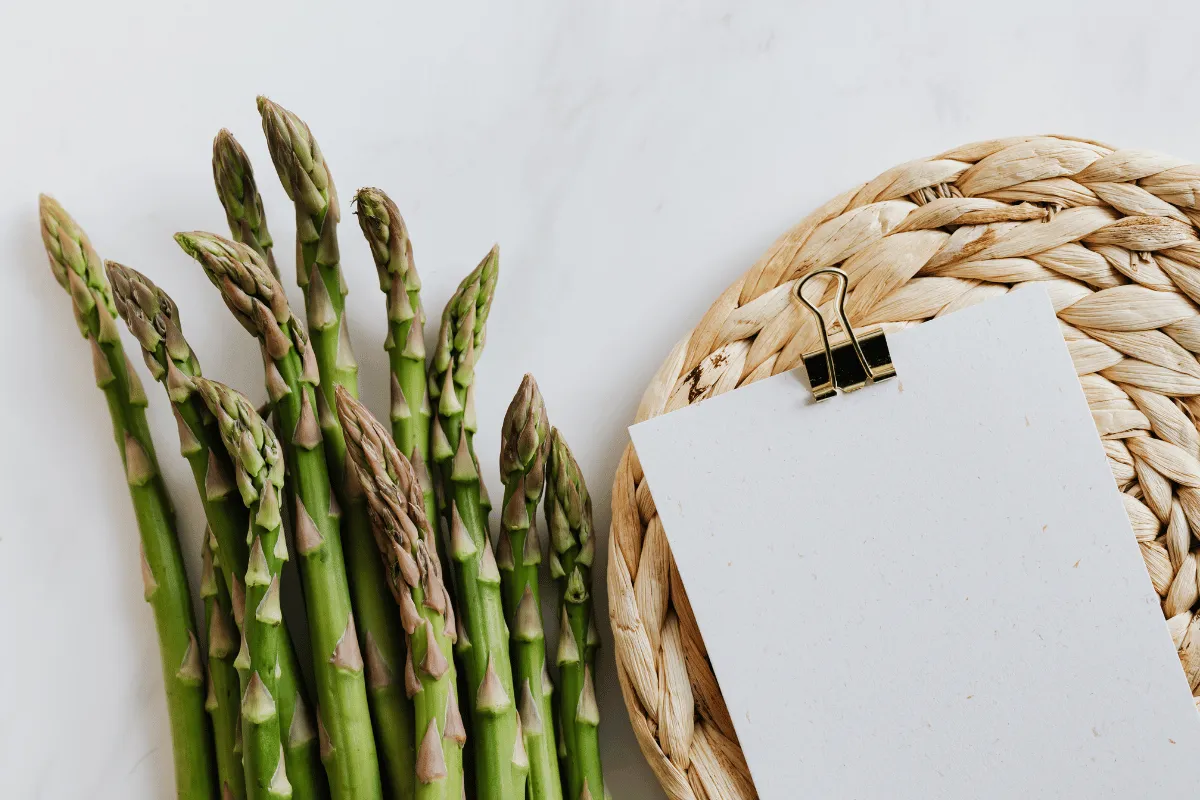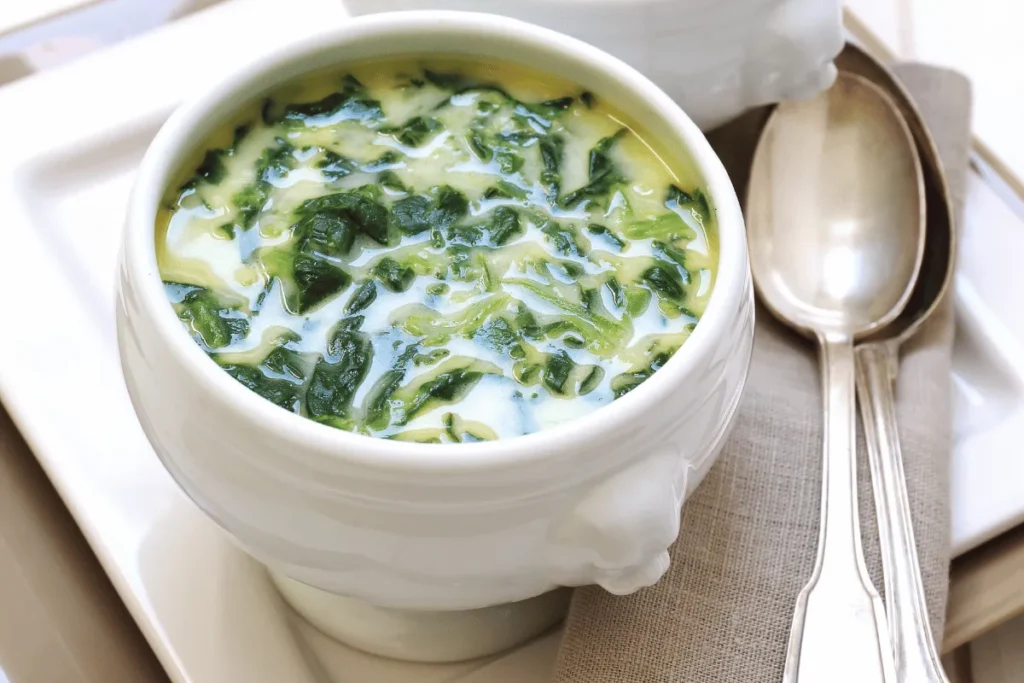Ingredients and Substitutions
Essential Ingredients for Creamed Asparagus
Diving into the heart of our creamy concoction, the ingredients play starring roles. At its core, creamed asparagus requires just a few key components: fresh asparagus spears, butter, flour, and milk. These simple ingredients come together to form a dish that’s both elegant and comforting. The asparagus, with its vibrant color and tender texture, is the undeniable hero. Butter and flour merge to create a roux, the foundation of our creamy sauce, while milk adds a smooth, velvety consistency that lovingly coats each spear.
Creative Substitutions for Dietary Restrictions
Now, for those navigating dietary restrictions, fear not! Substitutions are aplenty. For a gluten-free version, swap out traditional flour for a gluten-free alternative like rice flour or almond flour. These substitutes work wonders in thickening the sauce without compromising the texture. If dairy is a concern, embrace the versatility of plant-based milks. Almond, soy, or oat milk can seamlessly replace cow’s milk, and vegan butter or olive oil can stand in for butter, ensuring everyone can enjoy this delightful dish.
Tips for Choosing the Best Asparagus
Ah, selecting the perfect asparagus is akin to choosing the right paint for a masterpiece. Look for spears that are bright green, with tightly closed tips. Thickness is a matter of preference, though medium spears often offer the best balance of tenderness and flavor. Remember, the fresher, the better. Fresh asparagus should snap crisply when bent, a sign of its readiness to be transformed into your creamy creation.
As we move forward, remember that cooking is an art and a science, a balance of precision and creativity. With the right ingredients and a dash of imagination, creamed asparagus can be a canvas for culinary expression, a dish that delights the senses and brings people together. So, let’s keep our aprons tied and our minds open as we continue this gastronomic journey.
Step-by-Step Cooking Guide

Preparing the Asparagus
First things first, let’s tackle the asparagus. Begin by washing your spears under cold water to remove any dirt or grit. Then, it’s time for a little trim. Bend each spear until it naturally snaps; this method removes the tough, woody part, leaving you with the tender goodness. If you’re in a pinch, you can also cut them about 2 inches from the bottom. Now, onto the cooking! Boil or steam your asparagus just until it’s tender-crisp — we’re talking bright green and still snappy. This usually takes about 3-5 minutes, depending on the thickness of your spears. Remember, they’ll continue to cook a bit in the sauce, so err on the side of al dente.
Making the Cream Sauce
Ah, the heart of our dish — the cream sauce. Start by melting butter in a saucepan over medium heat. Sprinkle in the flour, whisking continuously to prevent lumps. This roux, as it’s known, will thicken our sauce. Cook it for a couple of minutes until it’s just starting to turn golden. Now, gradually add your milk, continuing to whisk. This is where the magic happens. The mixture will begin to thicken into a velvety sauce, the perfect complement to our asparagus. Season with salt and a dash of pepper to taste. Keep stirring until the sauce coats the back of a spoon, then gently fold in your asparagus, letting it warm through. Voilà, your creamed asparagus is ready to enchant taste buds.
Combining Ingredients for the Perfect Texture
The final step is all about harmony. Gently mix your tender asparagus into the creamy sauce, ensuring each spear is lovingly coated. The key here is a gentle touch; we want to maintain the integrity of our asparagus spears. Once combined, give it a final taste test. Perhaps a pinch more salt? A whisper of pepper? This is your masterpiece, after all. Serve it hot, straight from the stove, and watch as it becomes more than just a dish — it’s a moment of comfort, a taste of home.
As we wrap up this section, remember that cooking is more than just a means to an end. It’s an act of love, a way to connect and share with those around us. So, as you stand over your stove, stirring that creamy sauce, know that you’re not just making a meal — you’re crafting an experience, one that’s sure to linger in the hearts (and stomachs) of all who taste it.
Serving Suggestions
Traditional vs. Modern Serving Ideas
When it comes to serving creamed asparagus, tradition often leans towards simplicity. A classic approach is to ladle it over a slice of toasted sourdough or multigrain bread, allowing the bread to soak up the creamy goodness while providing a satisfying crunch. This method harks back to days gone by, offering a comforting, hearty meal with minimal fuss.
However, the modern palate craves innovation, and creamed asparagus is a versatile dish that can rise to the occasion. Imagine it as a luxurious side to a perfectly cooked steak or grilled chicken breast, adding a touch of elegance to your dinner plate. For a vegetarian twist, pair it with a quinoa pilaf or a bed of wild rice, creating a balance of textures and flavors that speak to contemporary tastes. The beauty of creamed asparagus lies in its ability to adapt, making it a perfect companion to both classic and modern dishes.
Pairing with Main Courses
The rich, velvety texture of creamed asparagus makes it an ideal partner for a variety of main courses. In the realm of comfort food, it’s hard to beat the combination of this creamy dish with a tender, juicy beef roast. The contrast between the savory meat and the mild, slightly sweet asparagus is truly a match made in culinary heaven.
For those leaning towards lighter fare, consider serving creamed asparagus alongside a fresh, citrusy salmon fillet. The creaminess of the asparagus beautifully complements the fatty richness of the salmon, creating a harmonious dish that’s both satisfying and refreshing. And let’s not forget about the vegetarians; a hearty lentil loaf or a stack of savory pancakes can turn creamed asparagus into a main event, proving that this dish’s versatility knows no bounds.
As we move forward, let’s embrace the endless possibilities that creamed asparagus presents. Whether you’re sticking to tradition or venturing into new culinary territories, this dish offers a canvas for creativity, a chance to explore flavors, and, most importantly, an opportunity to create moments of joy around the dinner table. So, go ahead, serve it up, and watch as creamed asparagus becomes not just a dish, but a cherished part of your cooking legacy.
Nutritional Information
Delving into the nutritional aspect of creamed asparagus unveils a tapestry of benefits that extend beyond its comforting taste. This dish, when prepared thoughtfully, can be a healthful addition to any meal, offering a range of vitamins, minerals, and other nutrients essential for well-being. Let’s peel back the layers and explore the nutritional profile of creamed asparagus, highlighting its contributions to a balanced diet.
Health Benefits of Asparagus
Asparagus is a powerhouse of nutrients. It’s rich in fiber, which aids in digestion and helps maintain a healthy gut. Additionally, it’s a great source of vitamins A, C, and E, all of which are antioxidants that protect your cells from damage. Asparagus also boasts a good amount of vitamin K, essential for blood clotting and bone health. But that’s not all; this verdant vegetable is loaded with folate, a crucial nutrient for brain function and cellular repair. Incorporating asparagus into your diet is not just a treat for your taste buds but a boon for your body.
Caloric and Nutritional Breakdown of the Recipe
While creamed asparagus is undeniably a treat, it’s also relatively light on calories, especially when made with mindful substitutions. A serving of creamed asparagus, prepared with whole milk, clocks in at around 200 calories. However, opting for low-fat milk or plant-based alternatives can reduce this number significantly, making it a suitable option for those monitoring their caloric intake.
The dish’s fat content, primarily from butter and milk, can be adjusted based on dietary needs. Using olive oil as a substitute for butter and choosing skimmed or plant-based milk can lower the fat content without compromising the creamy texture that makes this dish so delightful.
As we wrap up this nutritional overview, remember that eating well doesn’t mean forgoing flavor. With a few smart choices and a bit of creativity, dishes like creamed asparagus can satisfy your cravings and support your health, proving that delicious and nutritious can indeed go hand in hand.

Frequently Asked Questions
Diving into the world of creamed asparagus, it’s natural to have questions bubble up. Whether you’re a first-timer or a seasoned cook looking to refine your technique, this section aims to address some of the most common curiosities and concerns. Let’s tackle these FAQs head-on, ensuring you’re equipped with all the knowledge you need to master this delightful dish.
Absolutely! While fresh asparagus is the gold standard for its crispness and flavor, frozen asparagus can be a convenient and tasty alternative. The key is to not overcook it, as it’s already partially cooked during the freezing process. Thaw it gently in your refrigerator before use, and reduce the cooking time slightly to maintain its texture and vibrant color. This flexibility ensures that you can enjoy creamed asparagus year-round, regardless of the season.
How Can I Make This Recipe Vegan?
Transforming creamed asparagus into a vegan delight is simpler than you might think. Swap out the butter for a plant-based alternative, and use your favorite unsweetened plant milk in place of dairy milk. Almond, soy, and oat milk are all excellent choices that lend a creamy texture without overpowering the dish. For the roux, a gluten-free flour or even cornstarch can work wonders in thickening the sauce. These substitutions not only make the dish vegan but can also add an interesting twist to the flavor profile.
Best Ways to Store and Reheat Leftovers
Creamed asparagus is best enjoyed fresh, but if you find yourself with leftovers, fear not. Store them in an airtight container in the refrigerator for up to two days. When it’s time to reheat, gently warm the dish over low heat on the stove, adding a splash of milk to loosen the sauce if necessary. Avoid microwaving, as it can cause the sauce to separate and the asparagus to become overly soft. With a little care, your leftovers can be nearly as delightful as the original serving.



